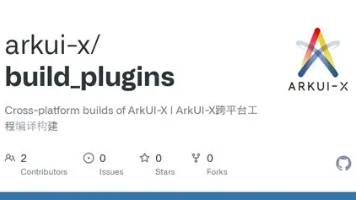#跟着晓明学鸿蒙# 社交应用数据模型设计
·

案例介绍
本教程将介绍如何设计一个社交应用的数据模型。我们将实现一个包含消息、联系人、发现和个人中心等功能的社交应用,通过合理的数据结构设计,支持未读消息提醒和新功能提示等特性。
代码实现
@Entry
@Component
struct BadgeTabContentExample {
@State currentIndex: number = 0;
private tabsController: TabsController = new TabsController();
// 标签页数据
@State tabItems: Array<{
title: string,
icon: Resource,
selectedIcon: Resource,
badge: number | string | null
}> = [
{
title: '消息',
icon: $r('app.media.icon_message_normal'),
selectedIcon: $r('app.media.icon_message_selected'),
badge: 12
},
{
title: '联系人',
icon: $r('app.media.icon_contacts_normal'),
selectedIcon: $r('app.media.icon_contacts_selected'),
badge: null
},
{
title: '发现',
icon: $r('app.media.icon_discover_normal'),
selectedIcon: $r('app.media.icon_discover_selected'),
badge: 'NEW'
},
{
title: '我的',
icon: $r('app.media.icon_profile_normal'),
selectedIcon: $r('app.media.icon_profile_selected'),
badge: null
}
];
// 模拟消息数据
private messages: Array<{
name: string,
content: string,
time: string,
unread: boolean
}> = [
{ name: '张三', content: '你好,最近怎么样?', time: '10:30', unread: true },
{ name: '李四', content: '周末有空一起打球吗?', time: '昨天', unread: true },
{ name: '王五', content: '项目进展如何了?', time: '昨天', unread: true },
{ name: '赵六', content: '文档我已经发你邮箱了', time: '星期二', unread: true },
{ name: '系统通知', content: '您的账号已完成实名认证', time: '星期一', unread: true },
{ name: '技术支持', content: '您反馈的问题已解决', time: '上周五', unread: true },
{ name: '活动推送', content: '新春活动开始啦,点击参与抽奖', time: '上周四', unread: true },
{ name: '安全中心', content: '您的账号刚刚在新设备上登录', time: '上周三', unread: true }
];
// 模拟联系人数据
private contacts: Array<{
name: string,
initial: string
}> = [
{ name: '张三', initial: 'Z' },
{ name: '李四', initial: 'L' },
{ name: '王五', initial: 'W' },
{ name: '赵六', initial: 'Z' },
{ name: '钱七', initial: 'Q' },
{ name: '孙八', initial: 'S' },
{ name: '周九', initial: 'Z' },
{ name: '吴十', initial: 'W' },
{ name: '郑十一', initial: 'Z' },
{ name: '王十二', initial: 'W' }
];
// 模拟发现数据
private discoveries: Array<{
title: string,
isNew: boolean
}> = [
{ title: '朋友圈', isNew: false },
{ title: '扫一扫', isNew: false },
{ title: '游戏', isNew: true },
{ title: '小程序', isNew: false },
{ title: '直播', isNew: true }
];
}
代码详解
1. 标签页数据结构
@State tabItems: Array<{
title: string,
icon: Resource,
selectedIcon: Resource,
badge: number | string | null
}>
标签页数据字段说明:
- title: 标签页标题
- icon: 未选中状态图标
- selectedIcon: 选中状态图标
- badge: 徽标内容,支持数字、文本或无徽标
2. 消息数据结构
private messages: Array<{
name: string,
content: string,
time: string,
unread: boolean
}>
消息数据字段说明:
- name: 发送者名称
- content: 消息内容
- time: 发送时间
- unread: 是否未读
3. 联系人数据结构
private contacts: Array<{
name: string,
initial: string
}>
联系人数据字段说明:
- name: 联系人姓名
- initial: 姓名首字母,用于排序和分组
4. 发现功能数据结构
private discoveries: Array<{
title: string,
isNew: boolean
}>
发现功能字段说明:
- title: 功能名称
- isNew: 是否为新功能
5. 状态管理
@State currentIndex: number = 0;
private tabsController: TabsController = new TabsController();
状态管理说明:
- currentIndex: 当前选中的标签页索引
- tabsController: 标签页控制器
总结
通过合理的数据结构设计,我们为社交应用提供了完整的数据支持。使用@State装饰器管理标签页数据,支持徽标显示功能,并为消息、联系人和发现功能提供了相应的数据模型。这种模块化的数据设计方式,使得应用的数据管理更加清晰和高效。
更多推荐
 已为社区贡献100条内容
已为社区贡献100条内容







所有评论(0)